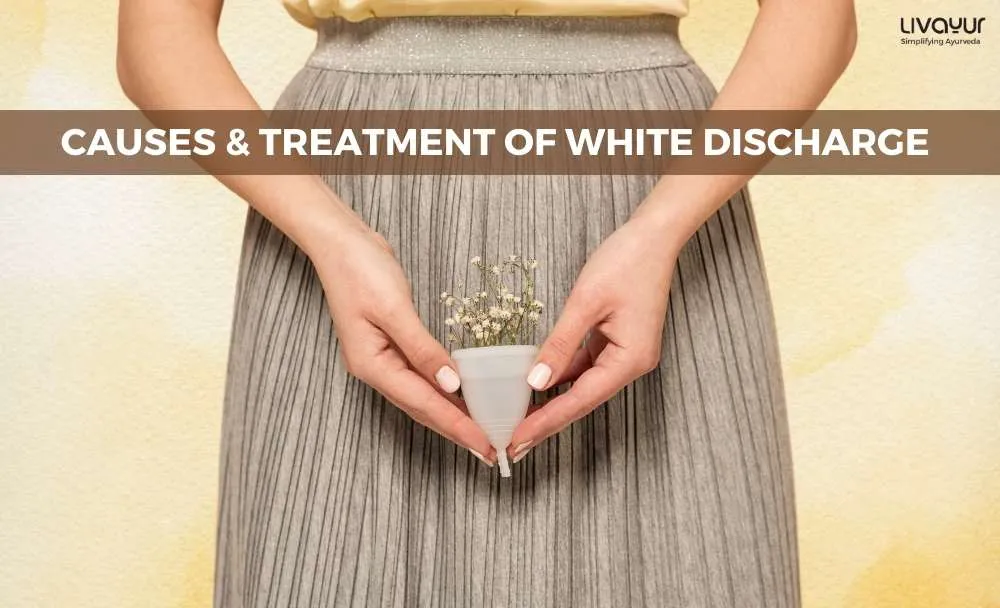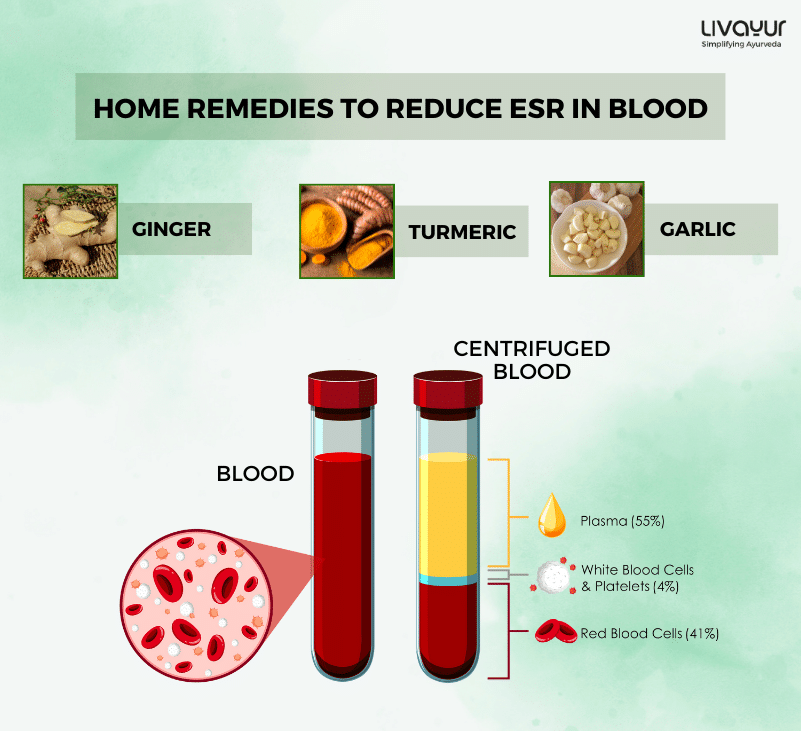This article is reviewed by an expert

White vaginal discharge is a common phenomenon that affects most women at some point in their lives. It is usually a sign of a healthy and functioning reproductive system, but sometimes it can indicate an infection or a problem. There are many possible causes of white vaginal discharge, and they can vary depending on the consistency, odour, and other symptoms that accompany the discharge. Here is a list of some of the most common causes of white vaginal discharge, in as much detail as possible:
10 White Discharge Causes & Treatments
- Ovulation: During ovulation, the body produces more oestrogen, which stimulates the cervix to produce more mucus that helps transport sperm to the egg and protects it from bacteria. The mucus may appear as a thin, clear or milky white discharge that has a slippery or stretchy consistency. It is odourless and does not cause any discomfort. This type of white vaginal discharge is normal and indicates fertility. (1)
- Pregnancy: A clear or milky white discharge during pregnancy is called leukorrhea, and it helps to keep the vagina clean and prevents infections. As the pregnancy progresses, the discharge may become thicker and more abundant, forming a mucus plug that seals the cervix. This type of white discharge is normal, as long as it does not have a bad odour or cause itching, burning or irritation. (2)
- Menstruation: Some women may experience a thick, white discharge before periods or white discharge after periods. This discharge tends to have a creamy or sticky consistency and is normal, helping prepare the uterus for implantation or to expel the remaining blood and tissue. The discharge may also have a slight odour or a tinge of pink or brown colour due to blood mixing with it.
- Yeast Infection: A yeast infection is a common type of vaginal infection that occurs when there is an overgrowth of a fungus called Candida albicans in the vagina, which can result from the use of antibiotics, tight or synthetic clothing and scented products or if diabetic or pregnant (3). It causes a thick, white discharge that has a clumpy or cottage cheese-like appearance and is usually accompanied by itching, burning, swelling and redness of the vulva and vagina. The discharge may have a yeasty or bread-like odour.
Treatment: A yeast infection can be treated with over-the-counter topical antifungal medications or probiotic supplements and neem oil (4).
- Bacterial Vaginosis (BV): BV is another common type of vaginal infection that occurs when there is an imbalance of the normal bacteria that live in the vagina. BV causes a thin, white or grey discharge that has a fishy odour, especially after sexual intercourse. It is one of the most common white discharge causes after yeast infections and can also cause itching, burning, or irritation of the vulva and vagina.
Treatment: Both garlic supplementation and boric acid suppositories have proven efficacy in BV-linked white discharge treatment (5,6).
- Sexually Transmitted Infections (STIs): Some STIs can cause white vaginal discharge as one of their symptoms. For example, chlamydia and gonorrhoea can cause a yellowish-white or greenish-white discharge that has a foul odour and may be accompanied by pain during urination, bleeding between periods, pelvic pain or fever (7).
Treatment: STIs can be treated with antibiotics or other medications depending on the specific infection, but they can also cause serious complications if left untreated. Therefore, it is important to get tested regularly and use barrier contraceptives to prevent STIs.
- Allergic Reaction: Some women may be allergic to certain substances that come into contact with their vagina, such as latex condoms, spermicides, lubricants, douches, soaps, perfumes or fabrics. An allergic reaction can cause a white or clear discharge that may be watery or sticky. It may also cause itching, burning, swelling, or rash of the vulva and vagina.
Treatment: Like any allergic reaction, this requires identification of the white discharge reason or trigger to stop exposure to it. Relief can also be provided with topical gels containing anti-inflammatory herbs such as aloe, turmeric and mint.

- Cervical Cancer: Cervical cancer can cause a white or brown discharge that may be watery or thick. It may also cause bleeding after sex, between periods, or after menopause; pelvic pain; or pain during urination. Cervical cancer can be detected by a Pap smear test, which is a screening procedure that collects cells from the cervix and examines them for abnormalities (8).
Treatment: Cervical cancer can be treated with surgery, radiation therapy, chemotherapy, or immunotherapy, while Ayurvedic treatments can be used to support recovery and protect against side effects. The most effective approach is prevention through HPV vaccination (9).
- Pelvic Inflammatory Disease (PID): PID is an infection of the female reproductive organs, such as the uterus, fallopian tubes, ovaries, and cervix. PID is usually caused by an untreated STI, such as chlamydia or gonorrhoea, that spreads from the vagina to the upper genital tract. PID can cause a white or yellow-green discharge that may have a bad odour (10). It may also cause fever; lower abdominal pain; pain during sex; irregular periods; or infertility.
Treatment: PID can be diagnosed by a pelvic exam, blood tests, urine tests, or imaging tests. Treatment can include the use of antimicrobial drugs, including herbs and may also require surgery in some cases.
- Foreign Body: A foreign body that is lodged in the vagina, such as a tampon or condom can cause a grey or white vaginal discharge that may have a foul odour. It may also cause irritation, inflammation, infection, or injury of the vulva and vagina. (11)
Treatment: A foreign body can be removed by a doctor or sometimes by the person themselves, depending on the type and location of the object. To prevent a foreign body, it is advisable to change tampons regularly, check for any remnants of condoms or other items after sex, and avoid inserting anything that is not meant for vaginal use.
Conclusion
These are some of the most common causes of white vaginal discharge, but there may be other less common or rare causes that are not mentioned here. If you have any concerns about your vaginal discharge or any other symptoms, you should consult a doctor or a gynaecologist for a proper diagnosis and treatment.
FAQs
Can stress cause white discharge?
Stress can indirectly cause white discharge by affecting the hormonal balance and the immune system of the body. Stress can also trigger or worsen some conditions that cause white discharge, such as yeast infection, bacterial vaginosis, or sexually transmitted infections.
What is the normal colour and consistency of vaginal discharge?
Normal vaginal discharge is usually clear, white, or slightly yellow, and has a thin, watery, or sticky texture. It does not have a strong or unpleasant odour, and it does not cause any itching, burning, or irritation.
When should I see a doctor about my white vaginal discharge?
White vaginal discharge is usually normal and harmless, but may require medical attention if accompanied by other symptoms, especially fever, abdominal pain and swelling.
Disclaimer: The information provided here is for general information and not meant to substitute any medical advice. Please consult your doctor for appropriate medical consultation.
References:
- https://www.ncbi.nlm.nih.gov/pmc/articles/PMC8487651/
- https://www.hindawi.com/journals/ogi/2013/590416/
- https://www.cdc.gov/fungal/diseases/candidiasis/genital/index.html
- https://www.ncbi.nlm.nih.gov/pmc/articles/PMC5483820/
- https://www.sciencedirect.com/science/article/abs/pii/S0378517320306438
- https://www.ncbi.nlm.nih.gov/pmc/articles/PMC6878170/
- https://www.ncbi.nlm.nih.gov/pmc/articles/PMC420177/
- https://linkinghub.elsevier.com/retrieve/pii/S2347-5625(21)00329-2
- https://www.thieme-connect.com/products/ejournals/abstract/10.4103/0971-5851.96961
- https://www.womenshealth.gov/a-z-topics/pelvic-inflammatory-disease
- https://www.ncbi.nlm.nih.gov/books/NBK549794/





















Thanks for another informative blog. The place else could I am getting that kind of info written in such an ideal method? I have a project that I’m simply now operating on, and I have been on the glance out for such info.
I like the helpful information you provide in your articles. I’ll bookmark your blog and take a look at once more here regularly. I am quite sure I’ll be told many new stuff proper here! Best of luck for the next!
Thanks a bunch for sharing this with all of us you really know what you are talking about! Bookmarked. Kindly also visit my web site =). We could have a link exchange arrangement between us!
I like this web site very much, Its a rattling nice situation to read and incur information. “Never hold discussions with the monkey when the organ grinder is in the room.” by Sir Winston Churchill.